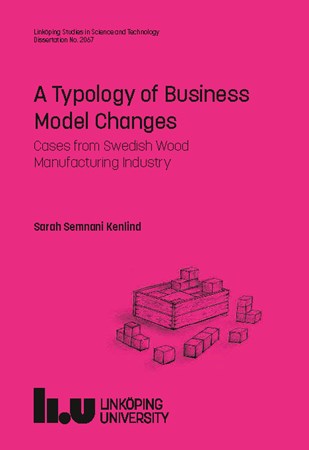Not so much attention
New companies such as Spotify, Apotea and Klarna are often in the spotlight, but traditional low-tech companies are still responsible for a major part of the economy and employment opportunities in Sweden. These companies generally receive much less attention from researchers than more modern innovative companies, maybe because they are experienced as “boring”. People find them quite simply less interesting, for several reasons.
In her doctoral thesis, A Typology of Business Model Changes: Cases from Swedish Wood Manufacturing Industry, Sarah Semnani Kenlind examines how the business models of five companies in the Swedish wood manufacturing industry changed between 2007 and 2018. The products from the five companies include windows, staircases, and wooden houses and buildings.
The thesis also presents a typology to describe the changes in business model, based on their degree and scope.
“I believe that the description applies also to other low-tech companies. And even though the degree of innovation differs, there are links also to high-tech companies. But that will have to be a topic for future research”, says Sarah Semnani Kenlind.
Effects of recession
During the first years of the period studied, the five companies were feeling the effects of the recession that followed the financial crisis of 2007-2008. The companies avoided risks, and were primarily focussed on surviving the crisis. Only small changes in the business models were carried out.
Sarah Semnani Kenlind.
The second phase of the period, after 2012-2013, saw larger differences between the companies. One of them was still experiencing economic difficulties and its focus thus remained on survival, while another developed a strategy based on connected smart homes. Others adapted to changing market demands, and changed their business model to meet these.
Sarah Semnani Kenlind presents a theory in which four classes of change of business model are identified – incremental changes (stepwise changes in which different components of the business model change independently), modular changes (larger changes such as the purchase of a new machine, focussed on only one business model dimension), architectural changes (stepwise changes in several components of the business model linked to each other), and transformational changes (larger changes in all components of the business model).
The changes are described using two dimensions: degree – the magnitude of the change in a particular component of the business model – and scope – the magnitude of the influence each change has on other components of the business model. The proposed business model framework comprises three main dimensions: operational platform, offerings and market.
Four different types
This gives a matrix that contains the four types of change in business model. It shows how the changes are influenced by the conditions experienced by each company.
“It was a great feeling when I started to see a pattern. To start with, everything had been a total mishmash of information that didn’t seem to have any coherence”, says Sarah Semnani Kenlind.
“The concept of a ‘business model’ is one that is used in all sorts of context. It is, however, seldom used as a tool to study changes, and when it is used, people normally only look at how frequently or rapidly the changes occur. I have studied them from several points of view.”
By far the most common form of change studied was architectural change, or stepwise processes in which changes in one component of the business model affect one or several others. Sarah Semnani Kenlind describes it as “fine-tuning” within several business model components, with the objective of maintaining the fit of the complete business model.
“In one case, we also saw how a company built up a totally new business model for standardized products. At the same time, the previous model was retained and used for customer-specific products. In this way, the company could keep its previous position in the market while testing something new.”
Translated by George Farrants
